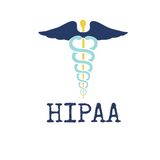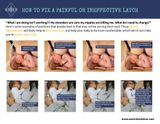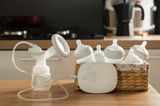My daughter was born on Sunday & I have to use a nipple shield to nurse her because I have flat nipples. Initially, she latched on great, but I now have engorged breasts. Last night she cried uncontrollably with my breast in her mouth and refused to eat. I don't know if I should try to pump or just keep trying to get her to drink from the source. Do you have any advice?
— Sincerely, A New Parent
Congratulations on the birth of your daughter! Looking at the dates from this submission, she is just over three days old. Seeing your baby not take the breast/chest is often concerning, especially when you know she is hungry.
The 3-day postpartum mark is a highly transitionary period. It sounds like you have the physical changes ie, engorgement (breasts/chest feeling heavy, full, hot) we expect to see as your body begins to make larger volumes of milk (typically called "milk coming in").
Sometimes engorgement can make at-the-breast/chestfeeding a challenge. The breast/chest may be too tight to latch onto easily or, depending on your & your baby's anatomy may make getting the signal to start sucking to the right place in the mouth a challenge.
I often suggest to parents dealing with this super common early breastfeeding challenge to try is reverse pressure softening before feeding. Typical engorgement will feel like the tip of your nose- if your breast/chest is feeling as firm as your forehead, it's a signal that reverse pressure softening is likely needed for good latching.
How to do reverse pressure softening
Two-Handed, One Step Method of RPS

Make sure your fingernails are short. Place curved fingertips on the breast, each one touching the side of the nipple.
Additional resources
- Engorgement Help - Kellymom
- If your baby doesn't feed at the breast/chest, whether that be because she's too upset to latch on, doesn't stay on well enough to feed well, or because you decided to skip a direct nursing session, ensuring milk is removed from the breast is essential. So if your baby has received a bottle/cup/syringe feed for any reason, you'll want to match that with an expression session (hand expression, manual or electric pump).
- Managing pumping & feeding can be a bit overwhelming, so you might find this feeding log I created to help you keep track of the number of times she's eating, if its at breast/chest or bottle, so you know if you need to pump, and her pees & poops.
- Hopefully, the reverse pressure softening through this early engorgement phase resolves the latching issue. It should be easier within the next day or so if it's related to the onset of rapid milk production. If you're still experiencing latching difficulties beyond that or need additional support, please schedule a visit with me ( Office Visits Near Berkley | Telehealth), and we can troubleshoot together.




